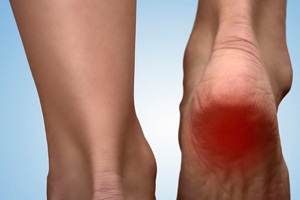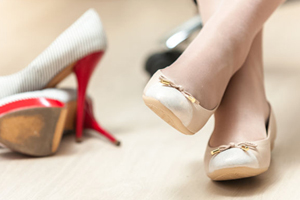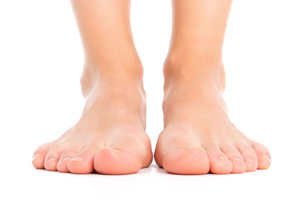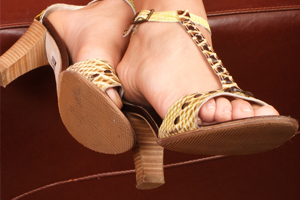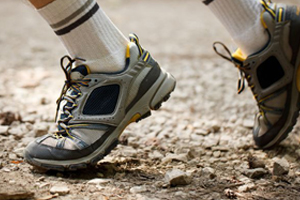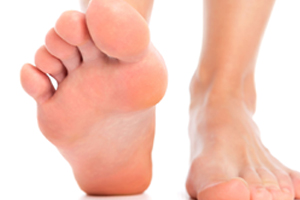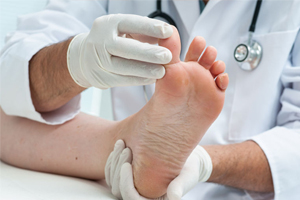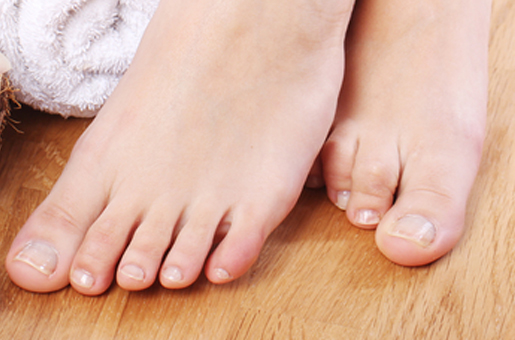
Definition:
Onychomycosis (toenail fungus) is an infection of the nail and sometimes surrounding tissue. It is extremely common with 20 percent of the general population and 75 percent of people over 60 years old affected. Frequently the problem causes cosmetic concerns, but many patients also experience pain. Sometimes toenail fungus can allow more serious infections to develop.
Symptoms:
Most patients see yellowing and thickening of the nail. Sometimes the area around the nail itches. With time the nail may become brittle with jagged edges, deformed or detached from the nail bed. Trimming your thickening nail can become difficult. If the nail gets too thick, wearing shoes can become uncomfortable.
Causes:
Multiple fungi species can infect the nail. Fungus grows well in warm, moist environments such as showers. Fungus infection is one of the few foot problems that affect more men than women, perhaps because more men walk barefoot in locker rooms. Age is a factor, too. Half the sufferers are people older than 70. Other risk factors include having certain medical conditions such as diabetes, vascular insufficiency and malnutrition.
Diagnosis:
Diagnosis is made based on clinical exam and can be confirmed by viewing scrapings of the nail under a microscope, or growing the fungus in a culture medium. This is not an easy condition to cure, so rather than trying home treatment with over-the-counter medications, it's best to see your doctor. As with many conditions, nail fungus infections are easier to treat if you catch them early.
Treatment:
Your doctor will trim your nail and scale away the dead layers. You may also be prescribed a topical medication. If the infection is very far advanced, topical medication won't be able to penetrate the thickened nail. In these cases, you can take prescription oral medication. These are very effective but must be taken for several months.
Removal of the nail can reduce symptoms rapidly, but regrowth of the nail can take one year during which time local treatment for fungus can be used. Oral medications include terbinafine (Lamisil), itraconazole (Sporanox), and griseofulvin (Fulvicin). Treatment regimens vary and can last between six weeks and one year. Side effects of systemic treatment include gastrointestinal disorders, liver toxicity, skin rash and other hypersensitivities. These medications should not be taken during pregnancy or if there is a chance you will become pregnant because of effects on the fetus.
Recovery:
Healing time depends on the type of treatment used. Prevention of a new infection is important. Orthopaedic foot and ankle specialists recommend good foot hygiene with frequent changing of stockings and rotating pairs of shoes to allow them to completely dry between uses. Also, avoid going barefoot in locker rooms and around swimming pools. If you have a pedicure, make sure the nail salon uses sterilized instruments.
Potential Complications:
More significant infection is uncommon, but in patients with a compromised immune system the thickened nail can be an entry site for bacterial infection that may become limb threatening.
Nail Salon Safety:
Professional pedicures can transmit infections if not done properly. Make sure the salon you visit meets the following standards:
- Maintains clean, sanitary conditions
- Is licensed and displays the licenses--with photo ID--of each operator
- Uses cleaned or single-use implements for each customer
- Uses small brushes to prevent nail polish and other products from coming in contact with the skin
Yorktown Footcare Group
(914) 245-7888
2050 Saw Mill River Road
Yorktown Heights, NY 10598


